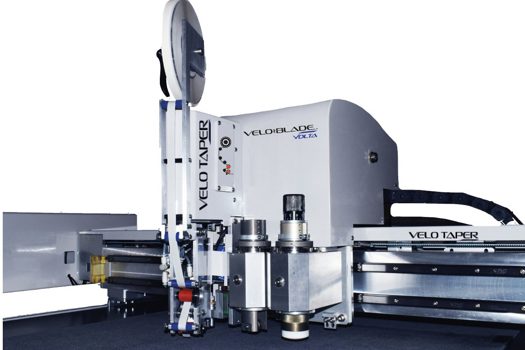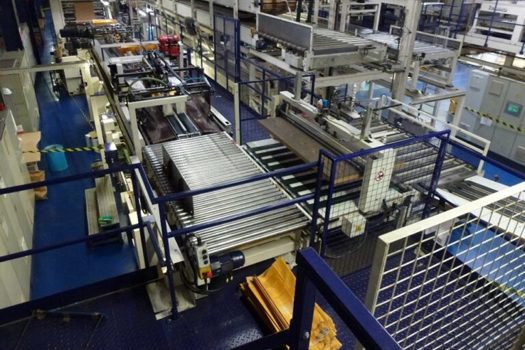What do you feel were the main trends and key industry developments in 2021?
The main trends in the print industry have been focused on an improvement in production and cost efficiencies and the inevitable and continued consolidation of the industry through acquisitions, mergers, and downsizing. As the pandemic has accelerated the shift to digital, the way we communicate with suppliers, customers and employees has changed substantially. With an increase of digital services and communication across industries, we saw a big decline in print volumes, especially within inplants. Those corporate companies who already had more control over communication tools were at a huge advantage, as they were able to continue using the processes around information and data management which they had in place from previous digitisation plans.
This growth in digital workflow was a catalyst for the growth of end-to-end manufacturing processes and automation. For example, we had major clients move away from various tailored manual processes and into robotically automated ones.
Similarly, as the pandemic induced the swift digitisation of the workplace, making meetings on Zoom and Teams the norm, multigenerational employees learnt and continue to learn new methods of digital working. The 'impatience' once attributed to the 'on demand' millennial Netflix culture has now become an experience shared by older and younger generations alike. With the normalisation of faster communication experiences, automation and short run, personalised applications that can be offered through multi-communication tools, instant communication is no longer only an expectation held by younger generations and the technological elite.
Do you feel that any trends have been accelerated because of the pandemic?
Some trends have certainly been accelerated by the pandemic. The drive for a greater online presence and associated activities is clearly reflected in the dramatic growth of online gifting and virtual cards.
Necessity has driven the digital transformation of businesses and growth of e-commerce, as people have become accustomed to not being able to purchase in-store. New methods of working, such as Ricoh’s 'Work Together Anywhere' campaign, have pushed business leaders to look at their business model and re-evaluate the value of print, digitisation and software. Print businesses have been forced to question what surrounds hardware and where they could be more self-sufficient, save more time, and save more on capital.
What do you expect to be the main trends and key industry developments in 2022?
In 2022, we expect the further accelerated offset to digital migration, impacted by the continued improvements and viability of inkjet platforms. It will also see greater addressing of concerns around housing customer data and managing cyber security. This, along with challenging SLAs, creating bespoke packages, and creating two-way communication with key print buyers, can no longer be offered through relationships alone. The industry will see the further development of workflow mechanisms that can capture short run personalised applications and deliver real time visibility along with cost management solutions, as key industry developments in the upcoming year.
What do you think will represent the single biggest opportunity for print businesses in 2022 and why?
In 2022, the biggest opportunity for print businesses will be leveraging the resurgence in specific applications which have transitioned to online services, such as direct mail, books, and the continued success of packaging and labels. This will help drive value back into the sector. For this to occur, we need to drive a change in buying behaviour, raising more awareness of sustainable processes, and thinking of faster lead time by leveraging local fulfilment as a business initiative.
Making production more localised would see a reduction in shipping, containers, and waste, as well as an increase in personalisation. Print businesses need to capitalise on the existing infrastructure in the upcoming year, while challenging their current workflow process, identifying where manual processes could cause errors or slow production and transitioning these into digital. The quick wins and short-term benefits need to be identified first, and then analysis needs to be undertaken as to where productivity gains could be made. This needs to be done carefully and considerately, and business leaders must take the time to further develop workers by upskilling them and nurturing their already existing skills to optimise the investments made and collaborate efficiently with suppliers. Print businesses must ask for innovations, ask for workflow reviews, and – most of all – remain curious.
What does the industry need to do differently in 2022?
Next year, the print industry needs to optimise the value of print as a critical component of the marketing mix; it needs to attract younger and more diverse workers, focus on sustainability, and reduce carbon emissions.
On the back of 2021, the rationalisation of office space and adoption of workspace providers already taking place will bring several challenges to organisations who have supported their employees with in-house communication tools such as printers and mailrooms. The shift to outsourcing an on-demand service will mean a change of working practices and expectations, but a lift and shift of a service is not necessarily going to offer the diverse perspectives required to drive innovation and develop new ways of doing business. Therefore, the print industry needs to attract a younger and more diverse workforce while retaining and upskilling its already existing one. This will drive innovation and new ways of doing business. Investing in people who mirror your customers, are curious about their challenges, and who will encourage new and exciting ideas is essential. This will underpin the discovery and retention of new business relationships and drive the print industry forwards.
Note: This prediction is taken from a special Briefing article in the new issue of Printweek featuring insights from industry suppliers, hence it does not follow the same question template as the other predictions.










